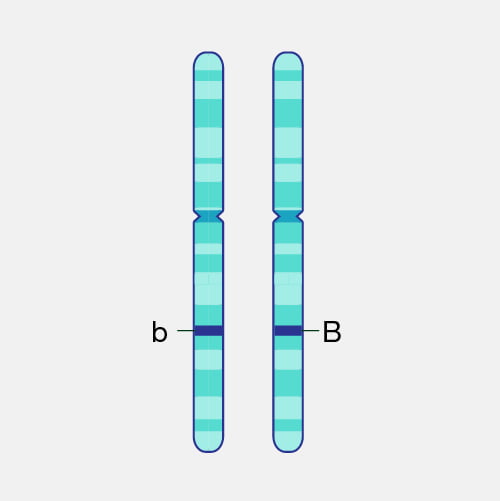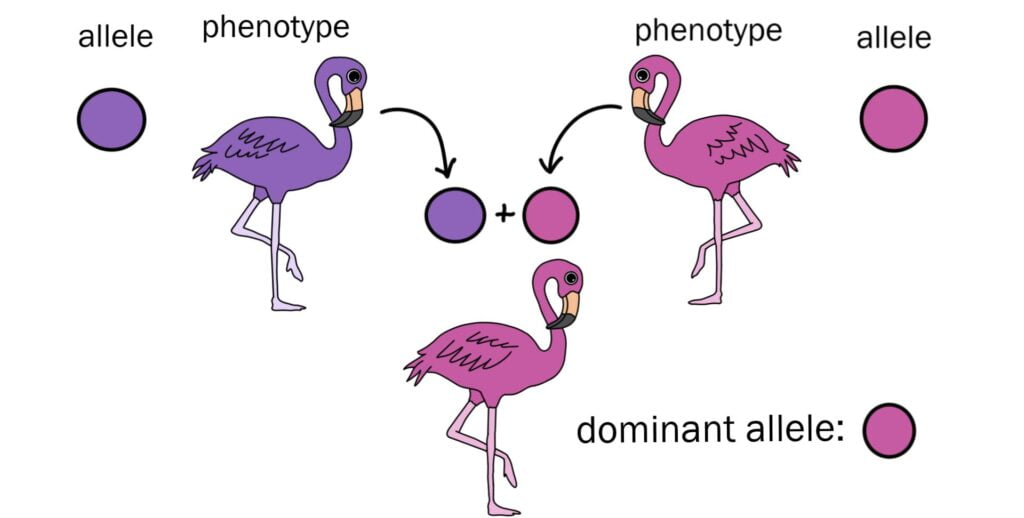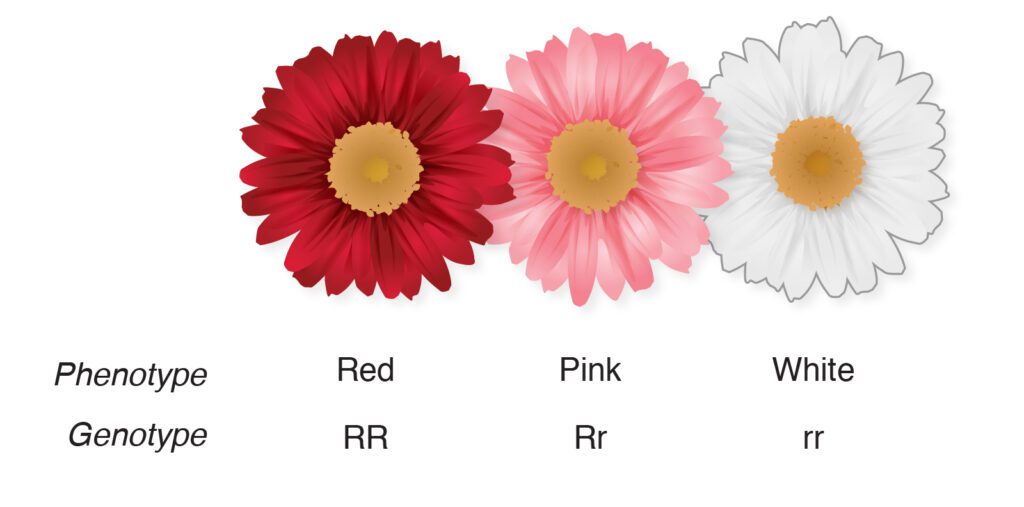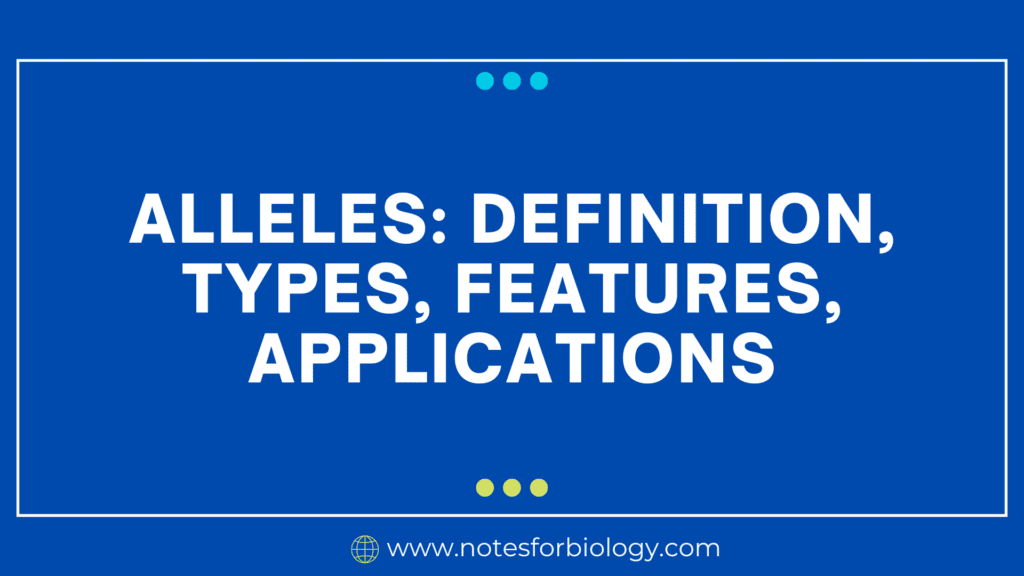Alleles are an essential part of genetics that are necessary to understand inheritance patterns and genetic diversity.Both gene variations are unique and share a chromosomal locus (position). An individual inherits one variant of the gene from each parent. The presence of distinct gene variants can result in variations of the same characteristic or different traits.
Table of Contents
Definition
One of two or more gene variants located at the same location on a chromosome is called. Variations in the DNA base sequence of it can result in differences in the characteristics that they regulate. Disparities in an organism’s phenotypic features, including behavior and physical appearance, may result from these variances.

Types
1. Dominant
They are exhibit their effects even in the presence of a single copy are known as dominant alleles. People with AA or Aa will exhibit the dominant characteristic, for instance, if ‘A’ denotes a dominant allele and ‘a’ a recessive allele for the same trait.

2. Recessive
When two copies of the recessive allele are present, the individual is homozygous for the allele, which is when these they manifest their effects. The recessive phenotype in the case of alleles ‘A’ (dominant) and ‘a’ (recessive) is exclusive to people with genotype ‘aa’.
3. Codominant
In a heterozygous person, both they are influence the phenotype. Humans with the blood type AB, where both the A and B alleles are expressed equally, are one example.

4. Incomplete Dominance
Because neither allele is totally dominant, attributes are merged. For example, in snapdragons, pink flowers (RW) are produced when a red bloom (RR) crosses with a white blossom (WW).
5. Multiple
In a population, a gene can have more than two allelic variations. The human ABO blood group system, which is governed by the three alleles A, B, and O, is one example.
Features
1. Genetic Variation
Genetic variety within a population is influenced by them , and this diversity can impact an organism’s capacity to adapt and survive.
2. Homozygous and Heterozygous Conditions
When a gene (such as AA or aa) contains two identical , the organism is said to be homozygous.
Heterozygous: A gene (such as Aa) contains two distinct alleles in an organism.
3. Mutation
Mutations, or variations in the DNA sequence, result in the creation of new alleles. Mutations can be harmful, inert, or advantageous.
4. Linkage and Recombination
Genetic variety is increased via recombination during meiosis, which can shuffle alleles on the same chromosome that are linked and inherited together.
5. Expression and Interaction
Genes can interact with one another (e.g., epistasis) and with the environment to affect how an allele is expressed.
Applications
1. Medical Genetics
Identifying genetic abnormalities and carrier statuses, as well as creating gene treatments, are made easier with an understanding of them. For instance, determining one’s BRCA1 and BRCA2 alleles might reveal a person’s vulnerability to ovarian and breast malignancies.
2. Agriculture
they are used in plant and animal breeding programs to improve quality, yield, and disease resistance, among other desired features. In order to give advantageous features, certain they are introduced to create genetically modified organisms, or GMOs.
3. Forensics
The foundation of DNA fingerprinting, which is utilized in paternity tests and criminal investigations, is allele profiling. Individuals can be identified by the examination of particular alleles at particular loci.
4. Evolutionary Biology
In order to comprehend evolutionary processes like natural selection, genetic drift, and gene flow, allele frequencies within populations are investigated.
5. Personalized Medicine
Customizing medical interventions according to a person’s genetic composition, including particular alleles, can increase therapeutic success and decrease adverse effects.
Frequently Asked Question
1. What are alleles and types?
“Allele” refers to the alternative forms or versions of a gene. People inherit one version of each autosomal gene from each parent, and we tend to categorize these versions. Typically, we call them either normal or wild-type versions, or abnormal or mutant versions.
2. What are the application of allele mining?
It helps in tracing the evolution of alleles, identification of new haplotypes and development of allele-specific molecular markers for use in marker-assisted selection (MAS).
3. What are the three allele types?
ABO blood groups in humans are controlled by the gene I. It has three alleles-IA, IB and i. Since there are three different alleles, six different genotypes are possible
What is an example of an allele?
For example, a dominant allele can override the traits of other recessive alleles, and it is these properties that help decide things like a person’s eye and hair color. In this case, alleles that code for brown eyes are dominant over the recessive alleles that code for blue eye
Related Article

